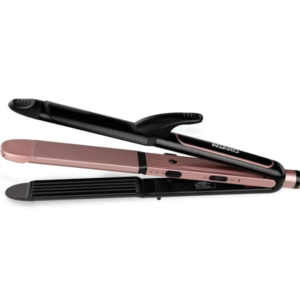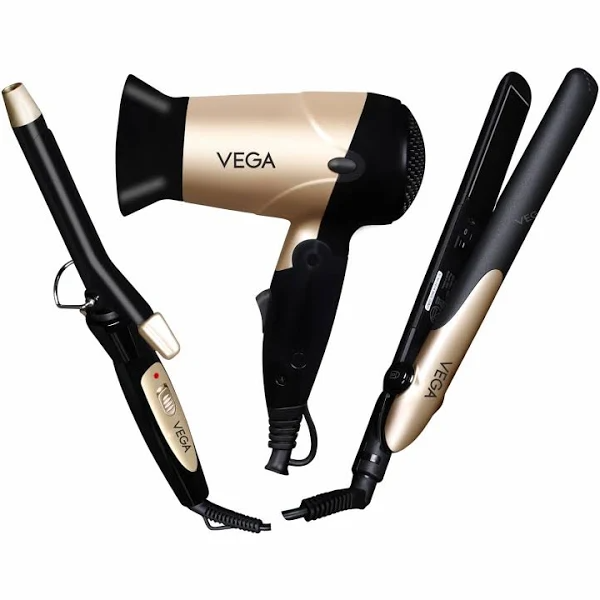
In today’s fast-paced world of beauty and fashion, hair straighteners have become a staple tool for achieving sleek and smooth hairstyles. Whether you’re aiming for a silky straight look or want to tame frizz and flyaways, a good hair straightener can work wonders. But before diving into the world of straightening, let’s understand what exactly a hair straightener is and the different types available.
What is a hair straightener?
A hair straightener, also known as a flat iron, is a styling tool designed to straighten and smooth the hair by applying heat. It consists of two heated plates that clamp down on sections of hair, effectively straightening it as you glide the straightener through.
Types of hair straighteners
There are various types of hair straighteners available on the market, ranging from ceramic to titanium to tourmaline. Each type has its unique features and benefits, catering to different hair types and styling preferences.
History of Hair Straighteners
The desire for straight hair dates back centuries, with ancient civilizations using various methods to achieve smooth locks. From hot combs heated over open flames to primitive straightening irons, the quest for straight hair has evolved significantly over time.
Origins of hair straightening
The earliest recorded instances of hair straightening can be traced back to ancient Egypt and Mesopotamia, where both men and women used heated tools to straighten their hair. These tools were rudimentary compared to modern-day straighteners but laid the foundation for future innovations in hair styling.
Evolution of hair straightening tools
Throughout history, hair straightening techniques continued to evolve, with advancements in technology leading to the development of more sophisticated tools. In the 19th century, metal hair straightening combs became popular, followed by the invention of electric straightening irons in the early 20th century. Today, we have a wide range of hair straighteners equipped with advanced features to cater to every hair type and styling need.
How Hair Straighteners Work
Understanding how hair straighteners work is essential for achieving optimal results while minimizing damage to your hair. At its core, hair straightening involves altering the hydrogen bonds in the hair’s keratin structure, allowing it to be reshaped temporarily.
Understanding the science behind hair straightening
Hair straighteners use heat to break the hydrogen bonds in the hair, allowing it to be straightened and reshaped. The plates of the straightener heat up to a specific temperature, which is then applied to the hair shaft, causing it to become more pliable and straight.
Different heating technologies used in hair straighteners
There are several heating technologies used in hair straighteners, including ceramic, tourmaline, and titanium. Ceramic plates distribute heat evenly and are gentle on the hair, while tourmaline plates emit negative ions to reduce frizz and static. Titanium plates heat up quickly and are ideal for thick or coarse hair.
Choosing the Right Hair Straightener
With so many options available, choosing the right hair straightener can be overwhelming. However, considering a few key factors can help you narrow down your choices and find the perfect straightener for your hair type and styling needs.
Factors to consider when buying a hair straightener
When shopping for a hair straightener, consider factors such as plate material, plate width, temperature settings, and additional features like automatic shut-off and heat protection. Additionally, take into account your hair type and texture to ensure compatibility with the chosen straightener.
Tips for selecting the best straightener for your hair type

If you have fine or damaged hair, opt for a straightener with adjustable temperature settings and ceramic plates to prevent overheating and minimize damage. For thick or coarse hair, look for a straightener with higher heat settings and wider plates for faster styling.
Steps to Straightening Hair Safely
While using a hair straightener can provide stunning results, it’s essential to follow proper techniques to avoid damaging your hair. By taking the necessary precautions and using the right products, you can achieve sleek, straight hair without compromising its health.
Preparing your hair for straightening
Before straightening your hair, start with clean, dry hair and apply a heat protectant product to minimize damage from heat styling. Divide your hair into sections using clips or hair ties to ensure even straightening.
Proper techniques for using a hair straightener
When straightening your hair, start with small sections and gently glide the straightener down the length of each section, avoiding excessive pressure or pulling. Use a comb or brush to guide the hair through the plates for a smoother finish, and finish with a lightweight serum or oil to add shine and reduce frizz.
Common Mistakes to Avoid
While hair straighteners can work wonders for transforming your hair, there are some common mistakes to avoid to prevent damage and achieve optimal results.
Overuse of heat
Using excessive heat on your hair can lead to damage, including dryness, breakage, and split ends. To minimize the risk of heat damage, avoid using the highest heat setting unless necessary and limit the frequency of straightening sessions.
Not using heat protectant products
Skipping heat protectant products can leave your hair vulnerable to damage from high temperatures. Always apply a heat protectant spray or serum before

